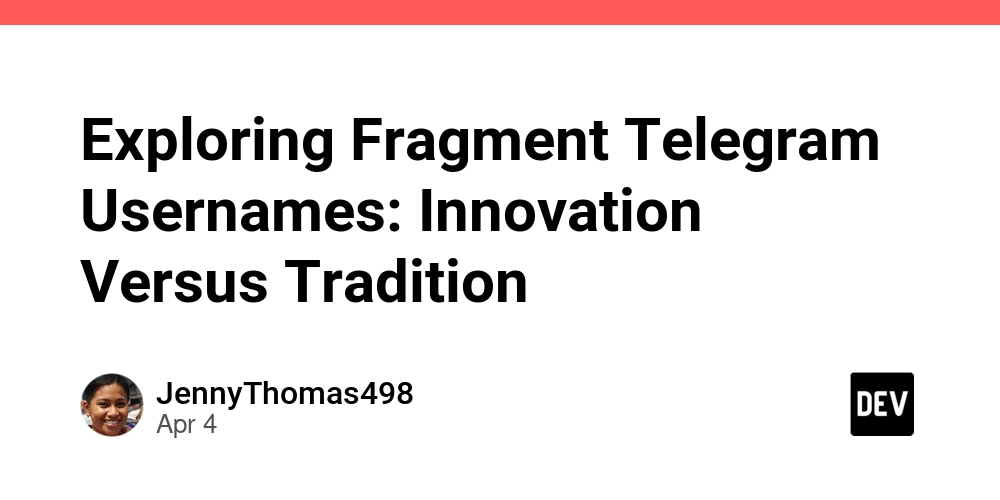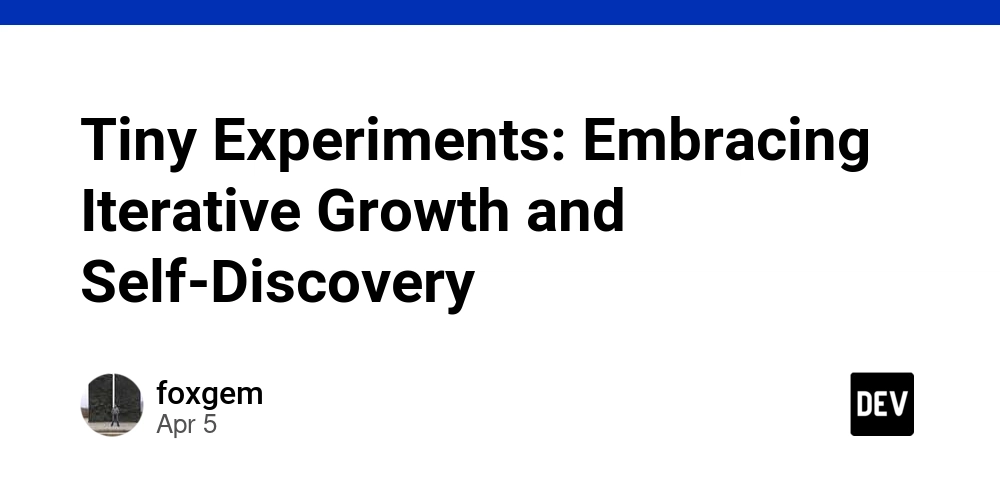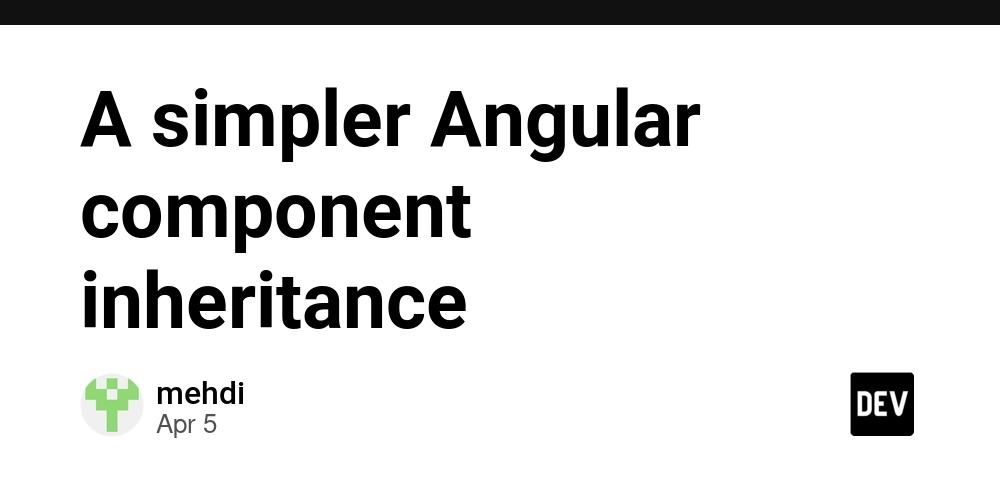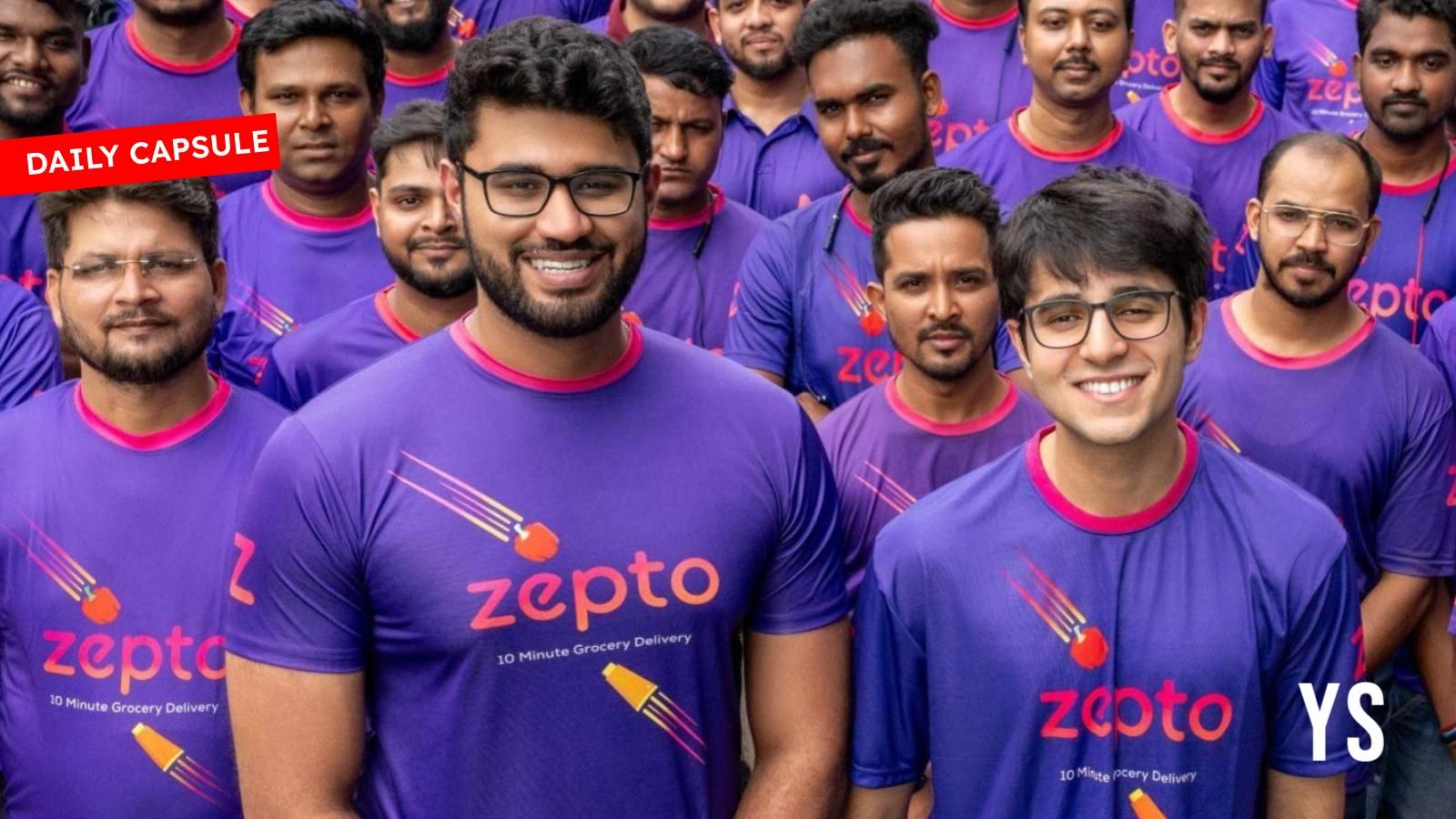Exploring Fragment Telegram Usernames: Innovation Versus Tradition
Abstract: Fragment Telegram usernames are revolutionizing digital identities, merging innovation with security, personalization, and convenience. This post delves into the history of traditional versus fragment usernames on Telegram, examines their core features, and explores practical use cases while weighing the challenges and future outlook. We also discuss the implications for social interaction, professional use, and cybersecurity with detailed comparisons, tables, and bullet lists. Introduction Usernames represent our digital fingerprints and have evolved significantly over time. Recently, Telegram introduced Fragment usernames, which allow for a modular and adaptive approach to personal identity. Unlike traditional usernames that are static and often limited in availability, fragments offer enhanced personalization and security. By embracing this innovative feature, users can enjoy dynamic interactions that cater to shifting circumstances and privacy needs. In this post, we explore the evolution of digital identities, compare traditional and fragment usernames, and analyze how this shift impacts not only everyday communication but also areas like cybersecurity and professional boundaries. With links to detailed articles such as Telegram's Fragment Blog and comparisons on Fragment Telegram vs Traditional Usernames, we aim to give you a holistic view of this emerging trend. Background and Context The Evolution of Usernames Usernames have long been the cornerstone of online identity. In the early days of the internet, static alphanumeric strings served as simple identifiers. Over time, as user expectations grew and competition for memorable names intensified, several challenges emerged: Availability Constraints: Popular usernames often became unavailable, forcing users into creative but sometimes unintuitive naming conventions. Identity Consistency: People cherished a unified identity across platforms for professional recognition, yet this consistency sometimes came at the cost of privacy. Emergence of Fragment Telegram Usernames Recognizing these challenges, Telegram introduced Fragment usernames as a solution. These usernames are not fixed; they can be reconfigured to adapt to various contexts—ranging from casual interactions on social media to more formal professional settings. For further insights on their technical underpinnings, refer to the discussion on Fragment Telegram and NFT. Ecosystem Context and Impact Fragment usernames reside within a broader digital ecosystem that increasingly values user privacy, dynamic interaction, and advanced security features. In this era of blockchain and decentralized identity verification, the transition from static identities to adaptable fragments is not only a technological innovation—it is a reflection of changing social, economic, and security norms. Core Concepts and Features To understand the significance of Fragment Telegram usernames, it is essential to break down the core concepts and features that differentiate them from traditional usernames. 1. Personalization and Adaptability Traditional Usernames: Static: Once chosen, traditional usernames rarely change. Limited Customization: Customization is largely restricted to the name itself, often leading to unmemorable handles. Fragment Telegram Usernames: Dynamic: Users can adjust parts of their identifier to suit different contexts. Adaptive: Offers a modular system that allows subsets of your identity to change for professional, personal, or creative purposes. Benefits include: Enhanced flexibility Reduced competition due to the modular approach Ability to embody multiple online personas without compromising overall identity 2. Security and Privacy Traditional Usernames: Uniform Security Protocols: Most rely on standard password-based mechanisms and two-factor authentication. Public Visibility: Static identity may lead to targeted cyber-attacks if the username is widely known. Fragment Telegram Usernames: Layered Security: By dynamically changing parts of the identity, fragments reduce the risk of unauthorized access. Segregated Identities: Allow for separation between personal and professional realms, improving privacy. For in-depth discussions on privacy features, visit Fragment Telegram and Privacy. 3. Usability and User Experience Fragment usernames introduce a minor learning curve as users adapt to personalized options. However, the benefits of contextual adaptability and enhanced security make this adjustment worthwhile. For more on user experience, see Fragment Telegram User Experience. Comparative Table Below is a detailed table that summarizes the key distinctions between traditional and fragment usernames: Feature Traditional Usernames Fragment Telegram Usernames Nature Static, alphanumeric string Dynamic, modul

Abstract:
Fragment Telegram usernames are revolutionizing digital identities, merging innovation with security, personalization, and convenience. This post delves into the history of traditional versus fragment usernames on Telegram, examines their core features, and explores practical use cases while weighing the challenges and future outlook. We also discuss the implications for social interaction, professional use, and cybersecurity with detailed comparisons, tables, and bullet lists.
Introduction
Usernames represent our digital fingerprints and have evolved significantly over time. Recently, Telegram introduced Fragment usernames, which allow for a modular and adaptive approach to personal identity. Unlike traditional usernames that are static and often limited in availability, fragments offer enhanced personalization and security. By embracing this innovative feature, users can enjoy dynamic interactions that cater to shifting circumstances and privacy needs.
In this post, we explore the evolution of digital identities, compare traditional and fragment usernames, and analyze how this shift impacts not only everyday communication but also areas like cybersecurity and professional boundaries. With links to detailed articles such as Telegram's Fragment Blog and comparisons on Fragment Telegram vs Traditional Usernames, we aim to give you a holistic view of this emerging trend.
Background and Context
The Evolution of Usernames
Usernames have long been the cornerstone of online identity. In the early days of the internet, static alphanumeric strings served as simple identifiers. Over time, as user expectations grew and competition for memorable names intensified, several challenges emerged:
- Availability Constraints: Popular usernames often became unavailable, forcing users into creative but sometimes unintuitive naming conventions.
- Identity Consistency: People cherished a unified identity across platforms for professional recognition, yet this consistency sometimes came at the cost of privacy.
Emergence of Fragment Telegram Usernames
Recognizing these challenges, Telegram introduced Fragment usernames as a solution. These usernames are not fixed; they can be reconfigured to adapt to various contexts—ranging from casual interactions on social media to more formal professional settings. For further insights on their technical underpinnings, refer to the discussion on Fragment Telegram and NFT.
Ecosystem Context and Impact
Fragment usernames reside within a broader digital ecosystem that increasingly values user privacy, dynamic interaction, and advanced security features. In this era of blockchain and decentralized identity verification, the transition from static identities to adaptable fragments is not only a technological innovation—it is a reflection of changing social, economic, and security norms.
Core Concepts and Features
To understand the significance of Fragment Telegram usernames, it is essential to break down the core concepts and features that differentiate them from traditional usernames.
1. Personalization and Adaptability
Traditional Usernames:
- Static: Once chosen, traditional usernames rarely change.
- Limited Customization: Customization is largely restricted to the name itself, often leading to unmemorable handles.
Fragment Telegram Usernames:
- Dynamic: Users can adjust parts of their identifier to suit different contexts.
- Adaptive: Offers a modular system that allows subsets of your identity to change for professional, personal, or creative purposes.
Benefits include:
- Enhanced flexibility
- Reduced competition due to the modular approach
- Ability to embody multiple online personas without compromising overall identity
2. Security and Privacy
Traditional Usernames:
- Uniform Security Protocols: Most rely on standard password-based mechanisms and two-factor authentication.
- Public Visibility: Static identity may lead to targeted cyber-attacks if the username is widely known.
Fragment Telegram Usernames:
- Layered Security: By dynamically changing parts of the identity, fragments reduce the risk of unauthorized access.
- Segregated Identities: Allow for separation between personal and professional realms, improving privacy.
For in-depth discussions on privacy features, visit Fragment Telegram and Privacy.
3. Usability and User Experience
Fragment usernames introduce a minor learning curve as users adapt to personalized options. However, the benefits of contextual adaptability and enhanced security make this adjustment worthwhile. For more on user experience, see Fragment Telegram User Experience.
Comparative Table
Below is a detailed table that summarizes the key distinctions between traditional and fragment usernames:
| Feature | Traditional Usernames | Fragment Telegram Usernames |
|---|---|---|
| Nature | Static, alphanumeric string | Dynamic, modular and customizable |
| Personalization | Limited, fixed identity | Extensive, supports multiple adaptations |
| Availability | High demand leads to scarcity | Reduced competition due to modular configuration |
| Security | Uniform and often predictable security | Enhanced, with segregated identities and periodic changes |
| Professional Use | Consistent but less flexible for varied contexts | Tailorable, ideal for managing personal and work-related interactions |
| Privacy | Can expose a fixed public identity | Offers controlled visibility, reducing exposure risks |
Applications and Use Cases
Fragment usernames are not merely a technical gimmick; they have concrete applications in various sectors:
A. Professional and Corporate Uses
Fragment usernames provide professionals with the opportunity to segment their online presence:
- Identity Separation: Users can create separate persona segments for personal, client-facing, and internal communications.
- Dynamic Rebranding: In fast-moving industries like tech and design, professionals can update their fragments to reflect current projects or roles.
For instance, a software developer might use one fragment for open source contributions and another for professional networking. This separation enhances focus and minimizes unwanted overlap between personal projects and corporate responsibilities.
B. Social Media and Community Engagement
Influencers and content creators are increasingly leveraging unique digital identities. Here, fragment usernames offer:
- Contextual Adaptability: Changing fragments to suit different campaigns or audience segments.
- Enhanced Engagement: Audiences are drawn to dynamic identities that can evolve, adding a fresh element to their online persona.
C. Privacy-Centric and Security-Focused Scenarios
In environments where privacy is paramount—such as forums discussing sensitive topics—fragment usernames provide a layer of anonymity:
- Ephemeral Identities: The ability to switch fragments mitigates tracking risks.
- Segregated Access: Sensitive discussions can be held using a fragment that is not linked to one’s other online profiles.
This is particularly useful in communities that require a high degree of confidentiality to foster a safe space for open dialogue.
Challenges and Limitations
While fragment usernames offer multiple advantages, there are inherent challenges that accompany any shift from tradition:
Learning Curve and User Adaptability
- Complexity: Users familiar with static usernames may initially struggle with the concept of modular identities.
- Consistency Issues: Fragmentation might confuse contacts or followers if switching between contexts isn’t managed carefully.
Accountability and Misuse
- Accountability Risks: The flexibility of dynamic fragments could lead to misuse where users hide true identities behind frequently changing handles.
- Misrepresentation: Individuals might exploit the system to present misleading personas without long-term accountability.
Technological and Integration Concerns
- Adoption Rate: The success of fragment usernames depends on the broader ecosystem’s ability to integrate and support dynamic identity management.
- Interoperability: While Telegram can support these features, other platforms may not, leading to fragmented user experiences across services.
Bullet List of Key Challenges
- User Education: Need for clear guides and tutorials.
- System Integration: Ensuring smooth operation across multiple platforms.
- Security Protocols: Constant updates to keep pace with evolving cybersecurity threats.
- Regulatory Compliance: Managing identity shifts in contexts where legal accountability is important.
- Potential for Abuse: Mitigating risks of fraud and misrepresentation.
For further discussion on future updates and identified challenges, refer to Fragment Telegram Future Updates.
Future Outlook and Innovations
Predicted Trends
The advent of fragment usernames hints at broader shifts in digital identity management:
- Increased Modularization: More platforms may adopt a modular approach to identity verification and personalization.
- Blockchain Integration: As blockchain technology matures, future implementations may further secure dynamic identities through decentralized verification methods.
- Enhanced Privacy Controls: Future updates may offer even finer control over which fragments link to specific data or user activities.
Technological Advancements
Innovative tools that blend open-source funding with modern licensing models may further support the evolution of these dynamic identities. For instance, discussions on fundraising and grants for open source projects such as those on Intels Open Source Hardware and Blockchain Initiatives provide insight into how these trends could influence identity management.
Open Source Funding and Sustainability
Further research into open source funding strategies is also crucial. Exploring opportunities in decentralized funding can help developers scale dynamic identity technologies while maintaining transparency and community involvement. For an in-depth look, see Exploring Open Source Funding for Research – A New Dawn.
Integration With Other Innovations
Fragment usernames might soon work in tandem with emerging identity management platforms, enabling:
- Real-Time Identity Switching: Seamless transitions between different personas during ongoing conversations.
- Interoperable Systems: Support across various social media platforms, messaging apps, and professional networks.
As digital landscapes continue to shift, innovations like fragmentation could soon become the new standard, balancing personalization, security, and accountability in unique ways.
Summary
Fragment Telegram usernames offer a promising evolution in managing digital identities. They depart from traditional, static naming conventions by introducing a modular, dynamic approach that enhances personalization, security, and flexibility. This innovation addresses age-old issues such as username availability, privacy, and the need for context-specific interactions.
To summarize:
- Introduction: We discussed the background of usernames and the arrival of fragment usernames.
- Background: An overview of traditional naming challenges and the new ecosystem for dynamic identities.
- Core Concepts: Detailed distinctions between traditional and fragment usernames in terms of personalization, security, and usability.
- Applications: Practical scenarios in professional use, social media, and privacy-sensitive contexts were reviewed.
- Challenges: Addressed the learning curve, integration, misuse, and regulatory implications.
- Future Outlook: Explored trends, technological advancements, and potential solutions that will shape the next generation of digital identity management.
The modular structure of fragment usernames not only embraces the demands of a fast-paced digital world but also poses new challenges for its users and developers alike. As this technology matures, staying informed of its evolution and adapting to its benefits will be vital for both individual users and organizations.
For more detailed information on this subject, be sure to check out the original piece Exploring Fragment Telegram Usernames: Innovation Versus Tradition, as well as related resources such as the Telegram Blog for official updates.
Additionally, for further reading on broader industry trends and funding strategies in technology, you may find these Dev.to articles useful:
- A Deep Dive into the EU Datagrid Software License
- Intel's Open Source Hardware and Blockchain Initiatives: Pioneering the Future of Technology
- Exploring Open Source Funding for Research – A New Dawn
Final Thoughts
The exploration of fragment usernames exemplifies how technology continuously adapts to meet current challenges while anticipating future needs. This innovative approach not only enriches the user experience through enhanced security and privacy but also sets the stage for a more flexible and context-driven digital interaction framework.
As users and developers adopt this new paradigm, balancing tradition with innovation will be key. Whether you are a professional seeking to manage your online identity meticulously, a social media influencer aiming for dynamic engagement, or a privacy-conscious user concerned about data security, embracing fragment Telegram usernames could mark the start of a new era in digital identity management.
By staying informed and adapting to technological shifts, we can all benefit from innovations that blend tradition with forward-thinking solutions—ensuring safer, more adaptable, and personalized interactions in the digital realm.
Embrace innovation, secure your identity, and step confidently into the future with fragment usernames.






















































.jpg)
%20Abstract%20Background%20112024%20SOURCE%20Amazon.jpg)



















































































































![[The AI Show Episode 142]: ChatGPT’s New Image Generator, Studio Ghibli Craze and Backlash, Gemini 2.5, OpenAI Academy, 4o Updates, Vibe Marketing & xAI Acquires X](https://www.marketingaiinstitute.com/hubfs/ep%20142%20cover.png)
































































































































![From drop-out to software architect with Jason Lengstorf [Podcast #167]](https://cdn.hashnode.com/res/hashnode/image/upload/v1743796461357/f3d19cd7-e6f5-4d7c-8bfc-eb974bc8da68.png?#)




































































































.png?#)





.jpg?#)
































_Christophe_Coat_Alamy.jpg?#)










































































































![Rapidus in Talks With Apple as It Accelerates Toward 2nm Chip Production [Report]](https://www.iclarified.com/images/news/96937/96937/96937-640.jpg)










































































































































